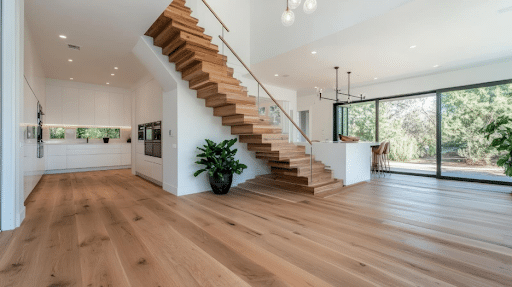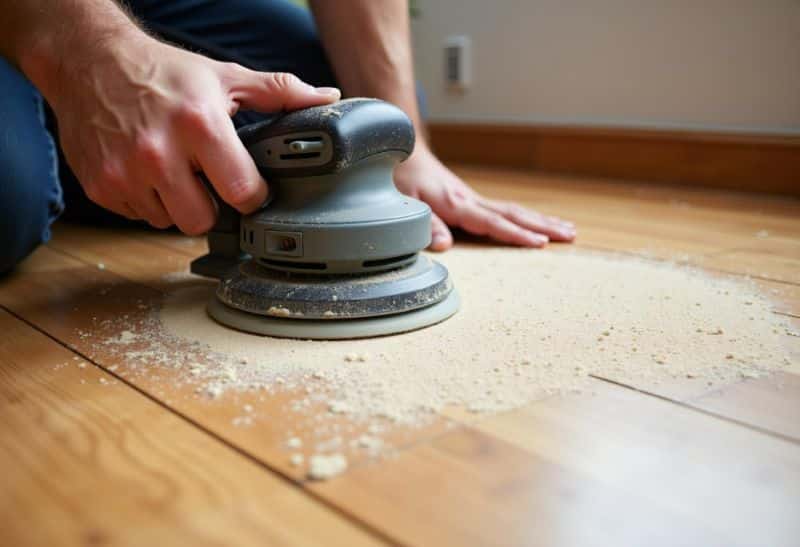You may be in the middle of planning a home remodel. There’s a lot to think about, such as designs, layouts, furniture, you name it. And somewhere along the way, flooring comes into the conversation. What kind of material will suit your space? This one’s not a small decision and shouldn’t be an afterthought.
Among the many options, timber often stands out as a top favorite for homeowners, architects, and builders. But despite its many excellent qualities, it also presents some trade-offs, much like other materials.
This article weighs the pros and cons of timber flooring. Keep reading to see if it’s the right fit for your home.
Pros
Timber flooring has earned its reputation as a premium choice for good reason. Let’s explore what makes it such a popular investment.
1. Excellent Durability
People naturally go for things that last, especially when it comes to their homes. After all, no one wants to replace flooring every few years.
Timber boards are a great option, as they stand well against wear and tear, even in high-traffic zones like hallways, kitchens, and living spaces. Their strength and longevity make them a good choice for families and busy households.
However, durability doesn’t come from the material alone. The installation method matters as much. If wood floorboards aren’t installed correctly, issues like warping, gaps, or movement can appear over time. And you don’t want that to happen.
To get the most out of it, it’s best to work with specialist timber flooring installers in Sydney or your local area. Experienced professionals have the right tools, the know-how, and a sharp eye for detail to get the job done right. Be sure to check their background, browse past projects, and read online reviews.
2. Adds Natural Warmth and Beauty
Timber brings a kind of warmth you may not get from other materials. Its natural grain, soft tones, and unique texture give a room that welcoming, lived-in feel right away.
It also offers a timeless look that doesn’t go out of style. This makes timber a safe choice if you’re after something that lasts through changing trends. It also blends well with any interior design, be it modern, traditional, coastal, or something in between.
Besides upgrading your home’s appearance, timber flooring also boosts its market value. Among the various types, hardwood is one of the most sought-after options. Its rich and long-lasting quality tends to catch potential buyers’ attention.
According to a 2022 report, hardwood flooring can deliver a return on investment of up to 118%. That means you could earn back more than you spent on the installation when it’s time to sell the property. So, it’s safe to say timber flooring is more than just a style option. It’s also a great investment that can pay off.
3. Environmentally-Friendly Material
More consumers are considering sustainability when choosing materials for their homes. Timber flooring, especially when sourced from responsibly managed forests, can be a great eco-friendly option. It’s renewable, long-lasting, and often requires less energy to produce than synthetic alternatives.
Using wood as one of the main materials in your dream home shows you care about design and make responsible choices. It also supports good forest management and long-term environmental health.
These benefits make timber flooring an attractive option for many homeowners. Its durability, visual charm, and possible return on investment present a strong argument for selecting wood floors.
Cons
So far, we’ve looked at timber flooring’s advantages. Now, let’s talk about the not-so-great side.
1. Prone to Scratches and Dents
Wood is durable, but it’s not invincible. While it can handle everyday use, it’s still prone to surface damage. Things like dragging chairs, dropping heavy items, or your pets racing through the hallway can leave scratches, dents, or scuff marks.
But this doesn’t mean your floors will fall apart. Timber still holds up well over time; you just need proper care. For instance, you can place rugs in busy areas, use protective pads under furniture, and regularly trim your pets’ nails.
Most surface damage isn’t permanent, too, since wooden floors can be sanded and refinished. This helps bring the material back to its natural beauty. So yes, it may scratch, but it also recovers well with a little effort.
2. Requires Regular Maintenance
Wooden floors need a bit of upkeep, not too much, but definitely more than your average surface. You may often find yourself sweeping and vacuuming, as timber tends to trap dust and small debris. A quick go with a damp (not soaked) mop also helps keep it fresh. And it doesn’t stop there. Every few years, a touch-up might be needed. That could mean polishing or reapplying a protective finish, especially in sunlit spots or busy areas.
It’s not what you’d call high-maintenance. Still, timber does ask for some attention every now and then.
3. Higher Initial Cost
The upfront cost is generally higher when you compare timber to other options like vinyl or laminate. Quality timber doesn’t come cheap, and neither does proper installation.
But think of it this way. The initial price tag might feel steep, but you’re investing in something that lasts. This material can outlive many cheaper alternatives, especially if it’s well cared for. So, while it may cost more at the start, the durability and added home value often make it worth it.
These drawbacks don’t necessarily make timber a poor option, but they need to be thoughtfully considered. The key is to weigh these challenges against the potential benefits.
Key Takeaway
Timber flooring has a lot going for it. It’s stylish, sturdy, and increases home value. However, it’s not without its downsides. The cost and maintenance are things to consider before making a decision. Like any home upgrade, it comes down to what fits your lifestyle, budget, and the space you’re working with.
If you’re after something that offers both beauty and lasting value, timber might be worth the investment.


